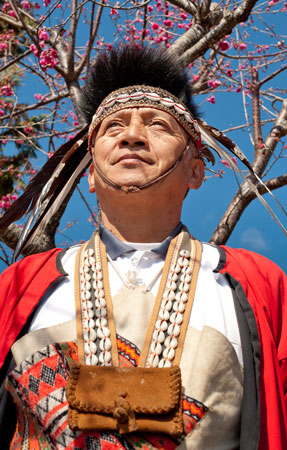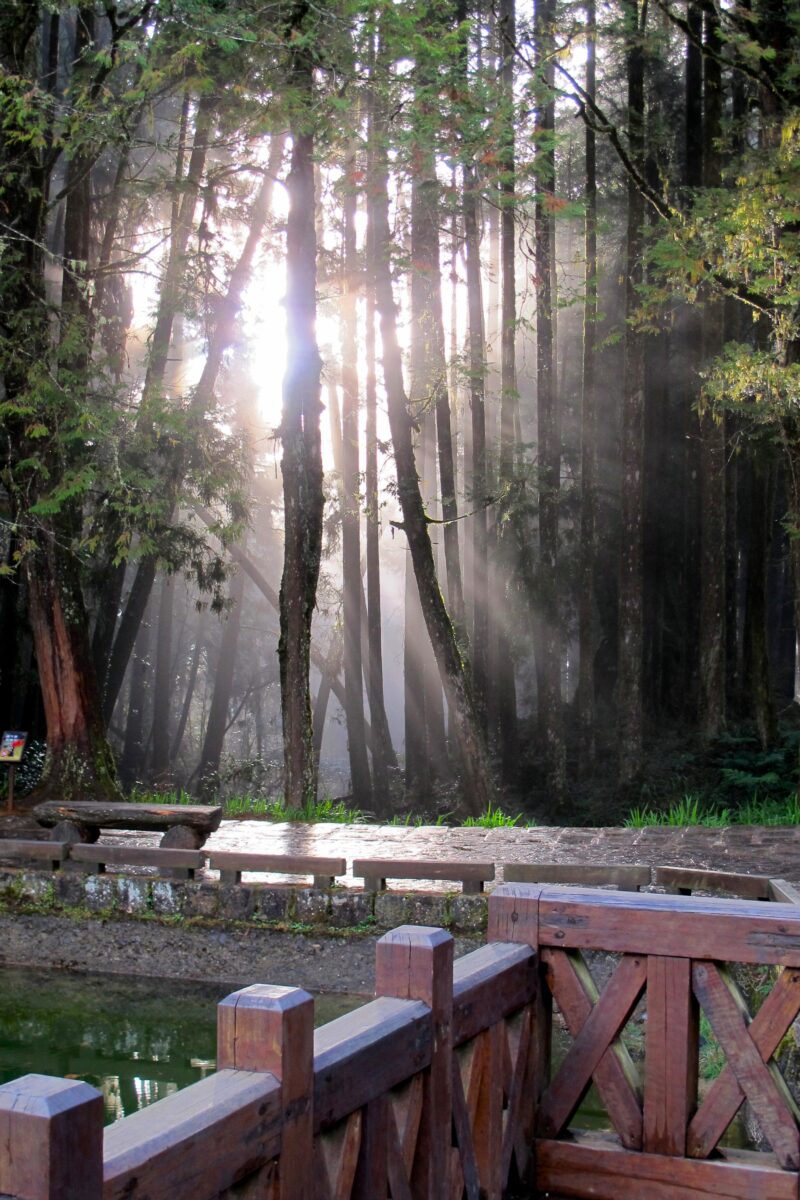Alishan | In & Around Alishan National Forest Recreation Area

Tourists typically focus on the 1,400-hectare (3,460 acres / 5.4 square miles) Alishan National Forest Recreation Area, and for good reason: It’s an excellent place for people who don’t consider themselves outdoors types, but who wish to revel in stunning views and sublime woodlands from a network of safe, clearly signposted trails. The most popular part of the forest recreation area lies around 2,200 m (7,218 ft) above sea level.
Alishan National Scenic Area is far larger than the forest recreation area, and encompasses tea-growing zones and indigenous villages as well as the forest resort. It’s a fantastically rewarding region, but a knowledgeable guide is needed to find the quietest and most pristine parts of this gorgeous part of the world.
The Alishan area is easy to access by road or railway, but no visit is complete without an on-foot immersion in the woodlands and bamboo groves, and a hike up to one of the ridges to enjoy panoramic vistas. Let our itinerary planners know just how much walking you’re willing to do, and we’ll select spots that won’t tire you out.
Because there’s no real industry (apart from tea production and bamboo cultivation) and few people, Alishan National Scenic Area is an ecological treasure house. The village of Lijia and its immediate surroundings have 25 of Taiwan’s 56 firefly species; they’re best seen between April and December. Taiwan’s avians are already well known to birding enthusiasts throughout the world, and Alishan is home to an abundance of fascinating species, among them the Grey treepie (Dendrocitta formosae). The expanse of natural broadleaf forest near the village of Guanghua is considered the very best place in Taiwan to see the Taiwan Partridge (Arborophila crudigularis), a hard-to-find endemic bird.

Alishan is multicultural. Around Shizhuo most people are of Han Chinese descent. Nearby Fenqihu (altitude: 1,405 m / 4,610 ft) is an enclave of Hakka families whose ancestors migrated from southern China to Taiwan in the 18th century, then relocated to Fenqihu to work in the logging industry and the town’s railway depot. Off the main road there are communities of Tsou people, one of Taiwan’s smaller indigenous ethnic groups.
Like Taiwan’s other aboriginal groups, the Tsou are Austronesians who share linguistic and genetic kinship with Polynesians, Melanesians, Micronesians, Hawaiian natives, and the Maoris of New Zealand. The Tsou language is utterly different to the Mandarin, Taiwanese and Hakka tongues spoken by the bulk of Taiwan’s citizens. Nowadays barely 2,000 people speak Tsou, yet language experts have identified four distinct dialects, a consequence of the tribe’s villages being scattered over mountainous parts of Chiayi County and Nantou County.
Alishan’s weather is as varied as its environment. Heavy cloud or fog for part of the day is extremely common, so frequent in fact that the ‘Sea of Clouds’ at daybreak is perhaps Alishan’s most famous sight. During winter, temperatures may not get much above 5 degrees Celsius (41 degrees Fahrenheit). In summertime, daytime temperatures seldom go higher than 20 degrees Celsius (68 degrees Fahrenheit), but it can feel much warmer due to the strength of the midday sun. We recommend that everyone brings a hat or an umbrella. Apply sunblock if you’re the kind of person who burns easily.
Between February and April, sakura draw large numbers of Taiwanese and other Asian visitors to several parts of the Alishan area. Sakura is a Japanese word adopted by the Taiwanese which means ‘flowering cherry tree’. At the height of the cherry-blossom season, the authorities impose traffic controls; self-driving tourists might have to park a considerable distance from the entrance of the forest recreation area. Extra buses are laid on; for details, ask at a visitor information centre.
During August and early September, typhoons sometimes disrupt transport links between Alishan and the lowlands. Because typhoons have been known to abruptly change course, summertime visitors should pay attention to weather forecasts and be prepared to adjust their plans at short notice.
